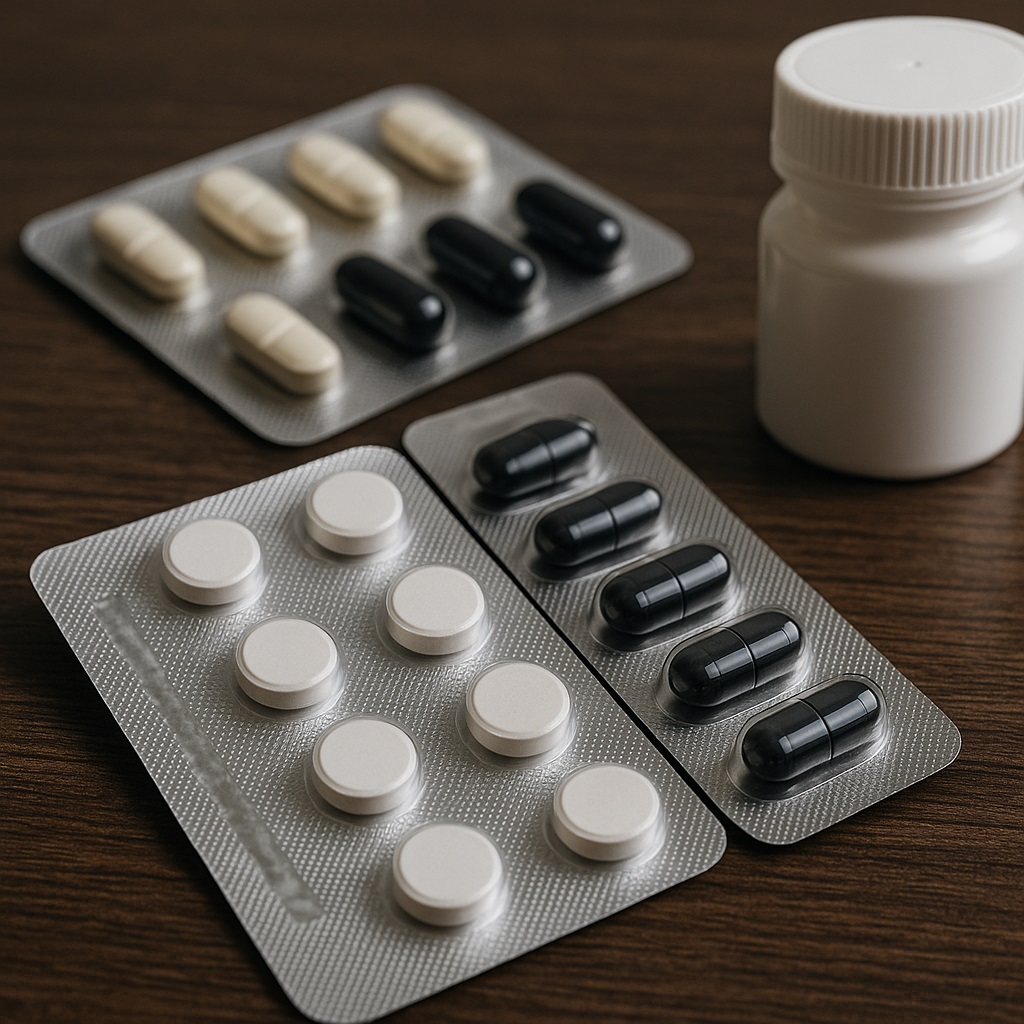When comparing wakefulness-promoting agents, modafinil and pitolisant stand out as two distinct choices. Both are designed to combat excessive daytime sleepiness, but their mechanisms, effectiveness, and practical utility diverge in important ways. After careful review, modafinil often emerges as the superior option—especially for individuals seeking sustained wakefulness, better safety, and wider clinical acceptance. Additionally, armodafinil, a close cousin of modafinil, deserves mention for its refined pharmacological profile.
Mechanisms of Action
- Modafinil works primarily by influencing dopamine reuptake while also modulating orexin, histamine, and other neurotransmitter systems. This broad mechanism results in strong, consistent wakefulness without the jittery overstimulation typical of traditional stimulants.
- Pitolisant, on the other hand, is a histamine-3 receptor inverse agonist. It indirectly boosts histamine release in the brain, which promotes alertness. While innovative, this pathway is narrower and often less potent compared to modafinil’s multifaceted effects.
Efficacy in Clinical Use of Modafinil and Pitolisant
- Modafinil has extensive data backing its use for narcolepsy, shift work sleep disorder, and obstructive sleep apnea-related sleepiness. Clinical trials consistently demonstrate significant improvements in wakefulness, vigilance, and cognitive performance.
- Pitolisant is approved for narcolepsy and cataplexy but tends to show slower onset and less dramatic effects compared to modafinil. Many users report it feels “lighter” and less reliable for combating severe fatigue.
- Armodafinil (the R-enantiomer of modafinil) provides a longer-lasting, smoother effect. It maintains plasma levels longer into the day, reducing the need for multiple doses. For patients needing sustained alertness, armodafinil may outperform standard modafinil.
Safety and Tolerability
- Modafinil is well-tolerated with a relatively mild side effect profile (headache, insomnia, nausea). It is non-addictive compared to amphetamine-based stimulants and is widely considered safe for long-term use under medical supervision.
- Pitolisant can cause insomnia, anxiety, and QT prolongation (a heart rhythm risk). These cardiac concerns make it less favorable for patients with cardiovascular vulnerabilities.
- Armodafinil shares modafinil’s tolerability but may reduce “afternoon crash” effects thanks to its pharmacokinetics.
Practical Advantages of Modafinil
- Broader Acceptance – Modafinil is globally recognized, widely prescribed, and supported by decades of real-world evidence.
- Cognitive Benefits – Beyond wakefulness, modafinil enhances focus, executive function, and resistance to fatigue-related errors.
- Versatility – Effective in multiple sleep disorders, off-label for fatigue in depression, ADHD, and even jet lag.
- Longer Track Record – Physicians trust it more given the depth of published research.
By contrast, pitolisant remains newer, more niche, and with less robust real-world usage data.
Conclusion: Why Modafinil (and Armodafinil) Are Better than Pitolisant
While pitolisant is a novel option with unique benefits, the leader of eugeroic drug list stands out as the more effective, reliable, and safer choice for most patients needing sustained wakefulness. Its proven efficacy across conditions, favorable side effect profile, and additional cognitive benefits make it superior.
Moreover, armodafinil refines the modafinil experience by extending its duration and offering a smoother alertness curve—making it arguably the best option for long-lasting productivity without disruptive crashes.
In sum: Modafinil is better than pitolisant, and armodafinil takes it a step further.
